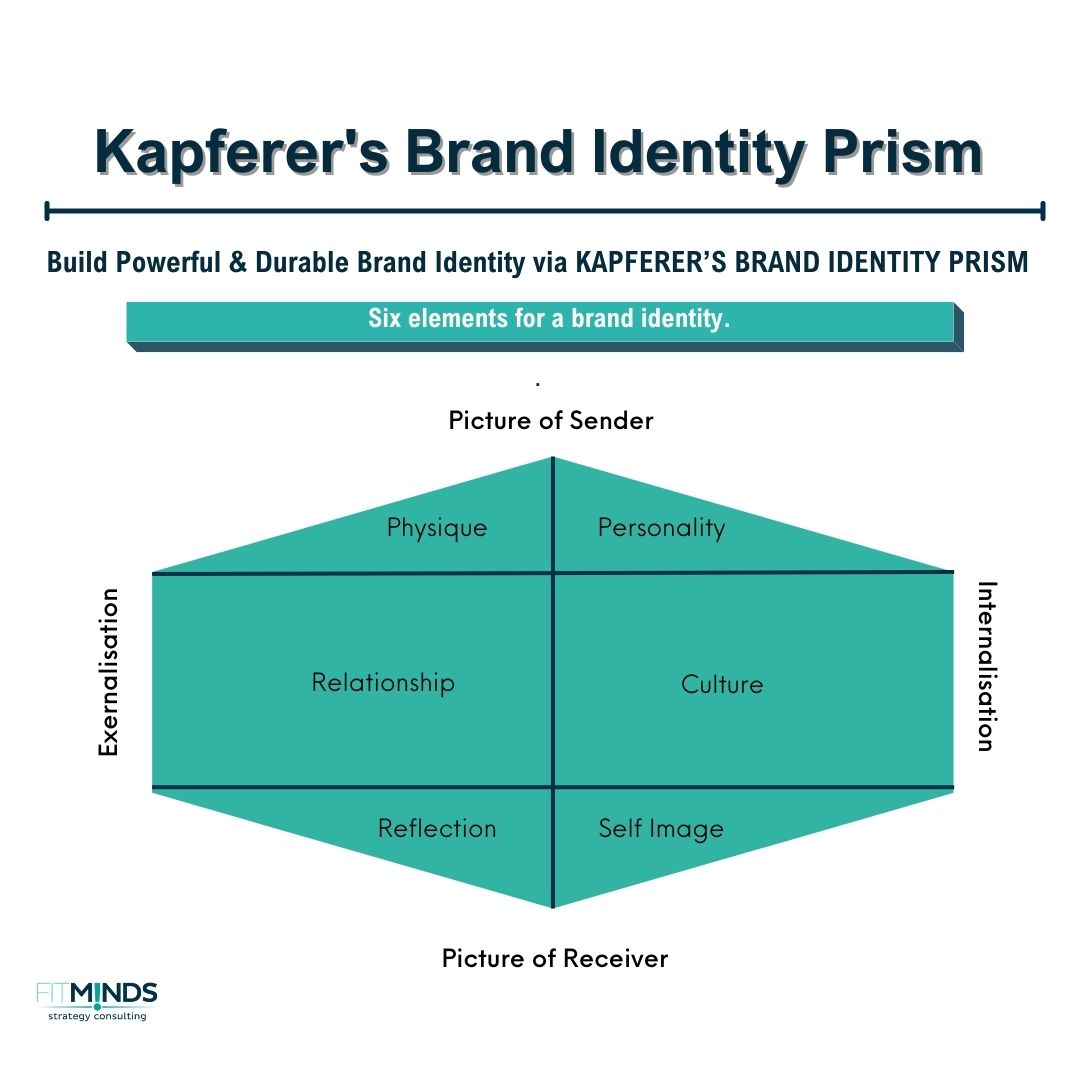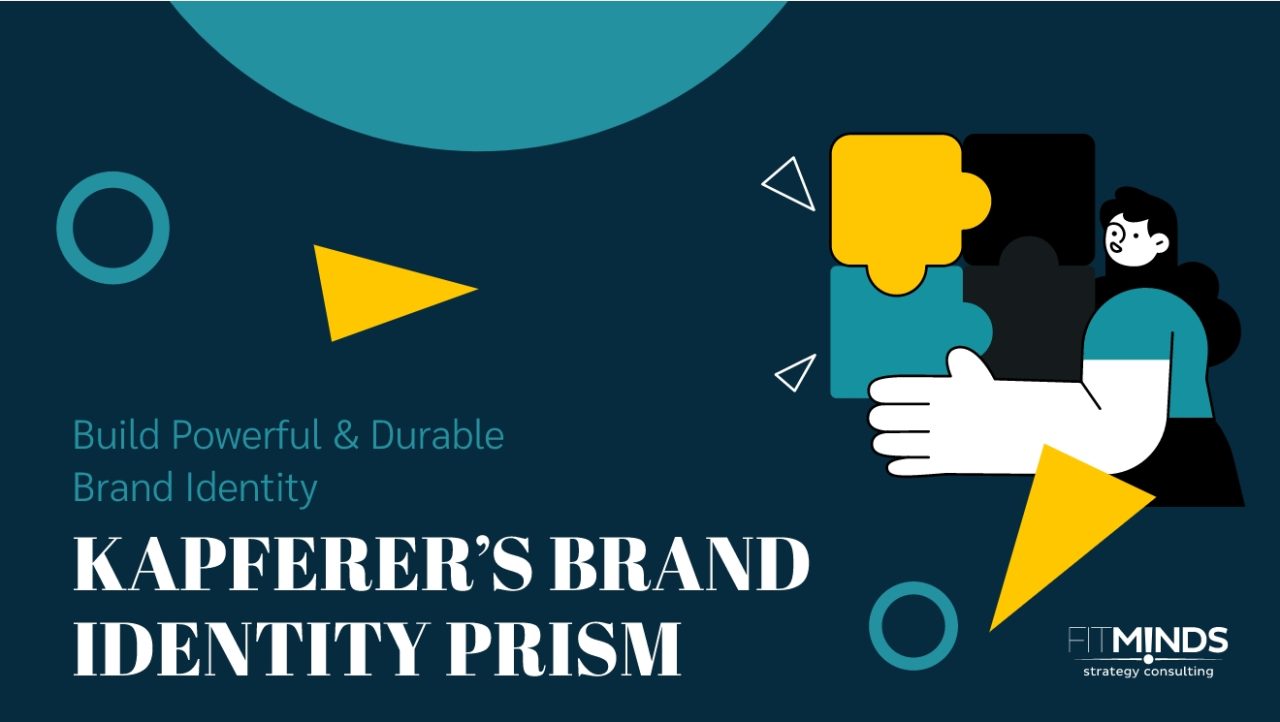Kapferer’s Brand Identity Prism is a model that helps businesses to build strong, enduring brand identities representing six key elements. The elements are: Physical appearance, personality, culture, relationship, reflection, and self-image. These six elements form a brand’s identity that reflects the core values of the brand.
Main Benefits of Kapferer’s Brand Identity Prism
Kapferer’s Brand Identity Prism helps companies to understand their brand’s identitiy and values, and how they are perceived by consumers. By considering all elements of a brand’s identity, organizations can develop an effective brand strategy.
Kapferer’s Brand Identity Prism helps:
- to provide a roadmap for a brand to effectively communicate with its audience,
- to cover all key aspects of a brand’s identity and create a strong, recognizable brand,
- to help organizations to differentiate themselves from their competitors,
- to lead to more effective brand communication and messaging.
Explanation of Kapferer’s Brand Identity Prism
The Kapferer Brand Identity Prism contains six unique elements of brand identity. The six elements are physical appearance, personality, culture, relationship, reflection, and self-image.
- Physical appearance: Physique describes the physical characteristics of your brand. Customers can visually perceive it. It is considered as the basis of the brand such as logo, packaging, design elements, basic functionalities, colours, and other characteristics.
- Personality: The second element of a brand image is the personality or character of a brand. It is developed by several marketing activities and it defines the brand’s personality, including its tone of voice and values.
- Culture: It describes the cultural and historical context and the value system that form the basis of a brand.
- Relationship: It analyzes relationship between brand and consumer. It focuses on building meaningful relationships for a durable and respected brand identity.
- Reflection: It reflects the characteristics of a brand’s target demographic. It describes who you want your customer to be.
- Self-Image: It focuses on how the customer visualize their ideal selves. Brands can target their messaging accordingly by understanding a customer’s ‘ideal identity’.
Once these steps have been completed, organizations can build durable and meaningful relationships with the consumer. By understanding customer’s identity and personality, a company can develop an effective brand strategy.

Picture of Sender describes a brand as an object. It focuses on how the brand presents itself. Physique and Personality fall under this group.
Picture of Receiver refers social aspects that determine the expression of a brand. It focuses on how customers see the brand. Reflection and Self-image belong to this category.
Externalisation refers all the output by the brand visible to customers. Physique, the relationship, and the reflection belongs to externalisation category.
Internalization includes value system, management and the character of a brand. Personality, culture and self-image fall under this group.
How to Apply Kapferer’s Brand Identity Prism
To apply Kapferer’s Brand Identity Prism to your business, FITMINDS is providing an adoption of the model that fits your company and your company’s needs. Kapferer’s Brand Identity Prism ensures companies to build powerful & durable brand identity and develop an effective brand strategy.
Contact us to get more information or discover your probable personalized roadmap for Kapferer’s Brand Identity Prism.
Additional Tips and Readings
- You can read The Five Product Levels to analyze customer needs and wants..
- For methods of brand equity, you can read Keller’s Brand Equity Pyramid.
- For a a step-by-step customer journey, you can read The Sales Funnel.
- To read more about customer behaviour, you can check The Hook Model of Behavioral Design.
Contact us to develop successful marketing strategies via Kapferer’s Brand Identity Prism.


